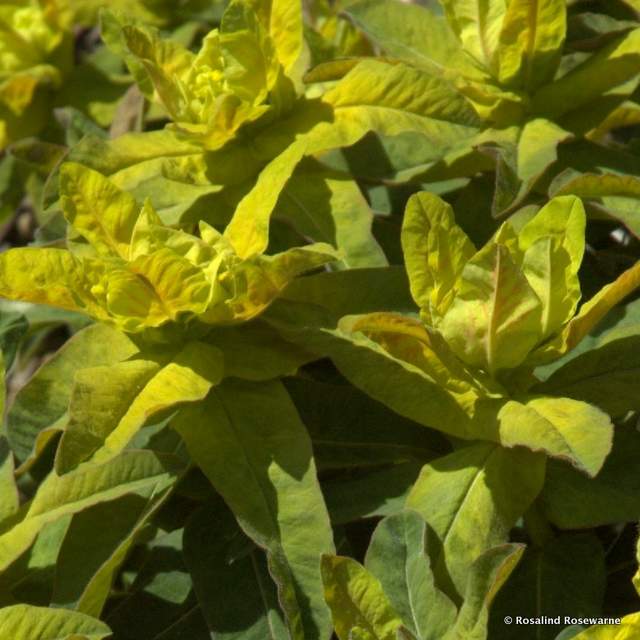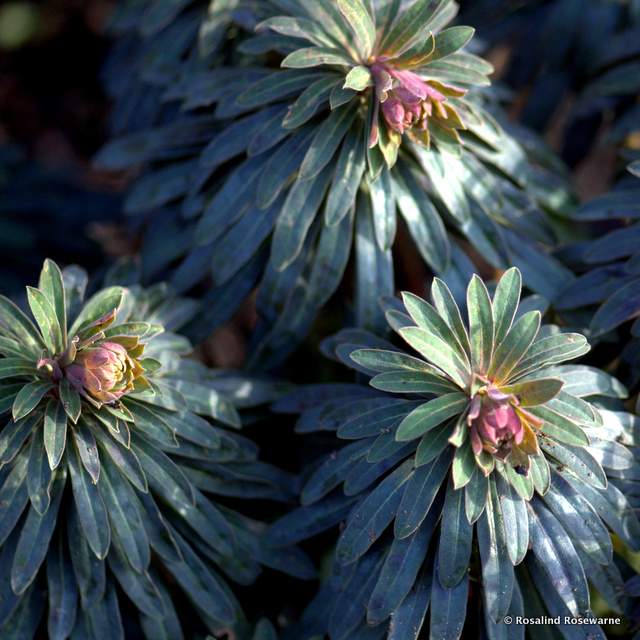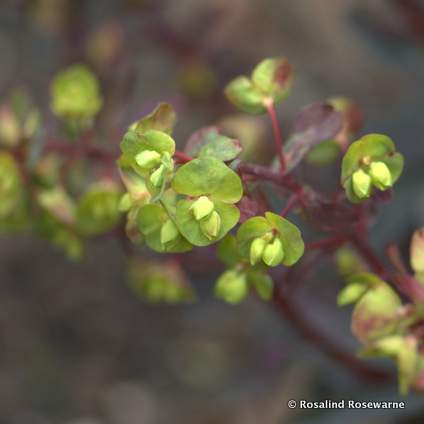One of the largest plant families having around 2000 members in the genus. The plants share features such as poisonous milky white sap and unusual floral structures.
The range of plants in the Euphorbiaceae family is huge (around 2000 members) from ground hugging annuals (Euphorbia inneuphidia) to tall trees (Euphorbia dendroides), the vibrant Christmas Pointsettia is a euphorbia along with many cactus like relations in hot desert like regions of Africa. It’s habitats are almost as varied from damp shady woodland to full droughty sun so there will undoubtedly be a species that will fit your conditions. Commonly called spurge or wood spurge, it cross breeds like a demon, though off spring is rarely as good as the parents.

Most commonly found in British gardens are stalwarts like Euphobia amygdaloides var. robbiae, a winner even in the most inhospitable spaces in a garden, thriving in the dry shade underneath trees, as well as in more forgiving settings. Euphorbia characias subs characias wulfenii (what a mouthful) but nevertheless a striking and robust plant with grey green foliage topped by large lime green bottle brush bracts in Spring. It’s a true Marmite plant this one, but I love it. Another very common species is E. Myrsinites with it’s curly wurly stems of pointy glaucous foliage occupying the lower part of the border. It thrive in sun and partial shade but the flowers are more striking if it gets some sun. E Paulustis and Polychroma bring out the almost yellow flowers in Spring, both fading as they age but providing a good backdrop plant for others to show off against. There’s E.griffithii ‘Dixter’ with its stunning orange bracts in Spring, single stems sprouting in vivid clumps that gradually bulk up as it ages.

At the moment my favourite is E.Mellifera, a larger cousin of E pasteurii, it has delicately elongated velvety leaves clumped like mini umbrellas all over the plant, growing to about 1.2m it provides a wonderful evergreen texture and foliage shape to the border for not very much work.

This year I’ll be growing E. oblongata as a cut flower, it’s short lived perennial and takes at least a year to bulk up enough to cut from but it’s delicate detailed bracts, lime green in their early stages deepening to a darker green as they age, provide a fantastic foil for threading other flowers through in a bouquet. But beware the milky sap on cutting!
Some of the variegated Euphorbia seem to be a bit less robust than their evergreen/grey friends, having tried several they all succumbed on my exposed plot, which is a pity.




